VoIP technology powers virtual phone calls, video conferences, chat messages, and more at a fraction of the cost of the traditional wired PSTN network.
Though VoIP has revolutionized contemporary telecommunications, the history of VoIP and internet telephony actually began nearly a century ago at Bell Laboratories.
How does Voice Over Internet Protocol intersect with German electronic music, luxury resorts, and the United States government?
Learn how internet-powered calling evolved from an obscure voice synthesizer into one of the most essential business communication and collaboration tools today.
1925: The Roots of VoIP Technology
The history of VoIP begins in 1925, when the engineering departments at AT&T and the Western Electric company joined forces to open the Bell Laboratory.
Bell Labs was created to invent, design, and improve technologies that would allow AT&T to expand its communication services nationwide.
In 1928, Bell Labs engineer Homer Dudley created The Voder, the first electronic voice synthesizer.
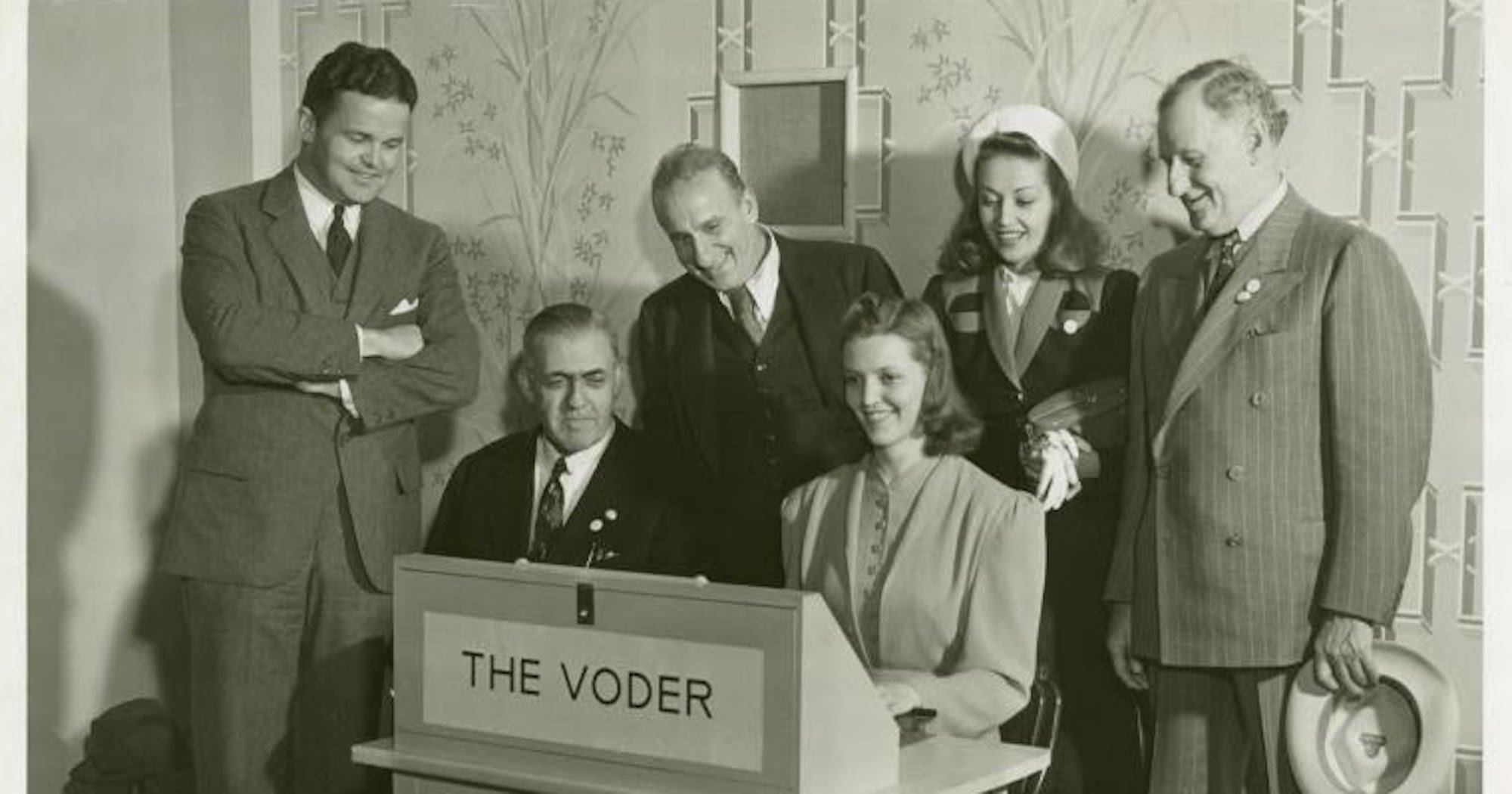
(Image Source: Smithsonian Magazine)
This first Vocoder generated electronic sounds using oscillators, noise generators, filters, and amplifiers alongside manual keys and pedals to adjust sound pitch and tone. When operated correctly, the Voder recreated human speech–laying the foundation for modern speech and audio codecs.
Dudley’s Voder made its debut to the public at the 1939 New York World’s Fair, where attendees were fascinated by its ability to analyze and generate comprehensible speech, adjust inflection, and speak in different pitches.
The video below is a recording of the Voder demonstration, and allows you to hear what the first voice synthesizer sounded like:
Because of its ability to encrypt voice messages, the Vocoder was used in the SIGSALY system to facilitate secure Allied communications during World War Two.
The invention of the Vocoder began the voice synthesis revolution, and in 1966, Japanese scientists used it to develop Linear Predictive Coding (LPC)–the first process to successfully convert standard speech into transmittable digital voice signals.
Modern iterations of Dudley’s Vocoder are used in digital voice scrambling, VoIP security measures like data encryption, and cochlear implants. Even the German electronic band Kraftwerk has incorporated sounds created by a Vocoder in their music.
1969: The ARPANET is Built
You can’t have Internet calling without the Internet itself.
Believe it or not, the Internet began as just an academic research project in 1969.
ARPA, or the Advanced Research Project Agency, (known today as DARPA) was an agency of the US Department of Defense dedicated to military technology. Given the political climate at the time, DARPA wanted to create a reliable network of interconnected computers that could communicate with each other at any time, regardless of each computer’s location.
In short?
They wanted to create what we now know as “the Internet.”
Though phone calls could easily connect people from across the world in real time, these phone conversations were powered by physical copper wiring, circuits, and circuit switching via the PSTN. During an active phone call, the wired telephone network established a dedicated, end-to-end connection between the two involved phones.
But once that call ended?
So did the previously established circuit connection.
ARPA wanted to create a communications network that could survive significant physical destruction (like a nuclear attack), streamline high-level military communication, and expand computer access to researchers throughout the country.
This communications network couldn’t rely on a dedicated, end-to-end circuit connection. Instead, this network needed to be able to ascertain the fastest and most reliable way to transmit information between endpoints.
The solution was packet switching, which sends/receives smaller packets of data over independent digital networks, not copper phone lines and circuits.
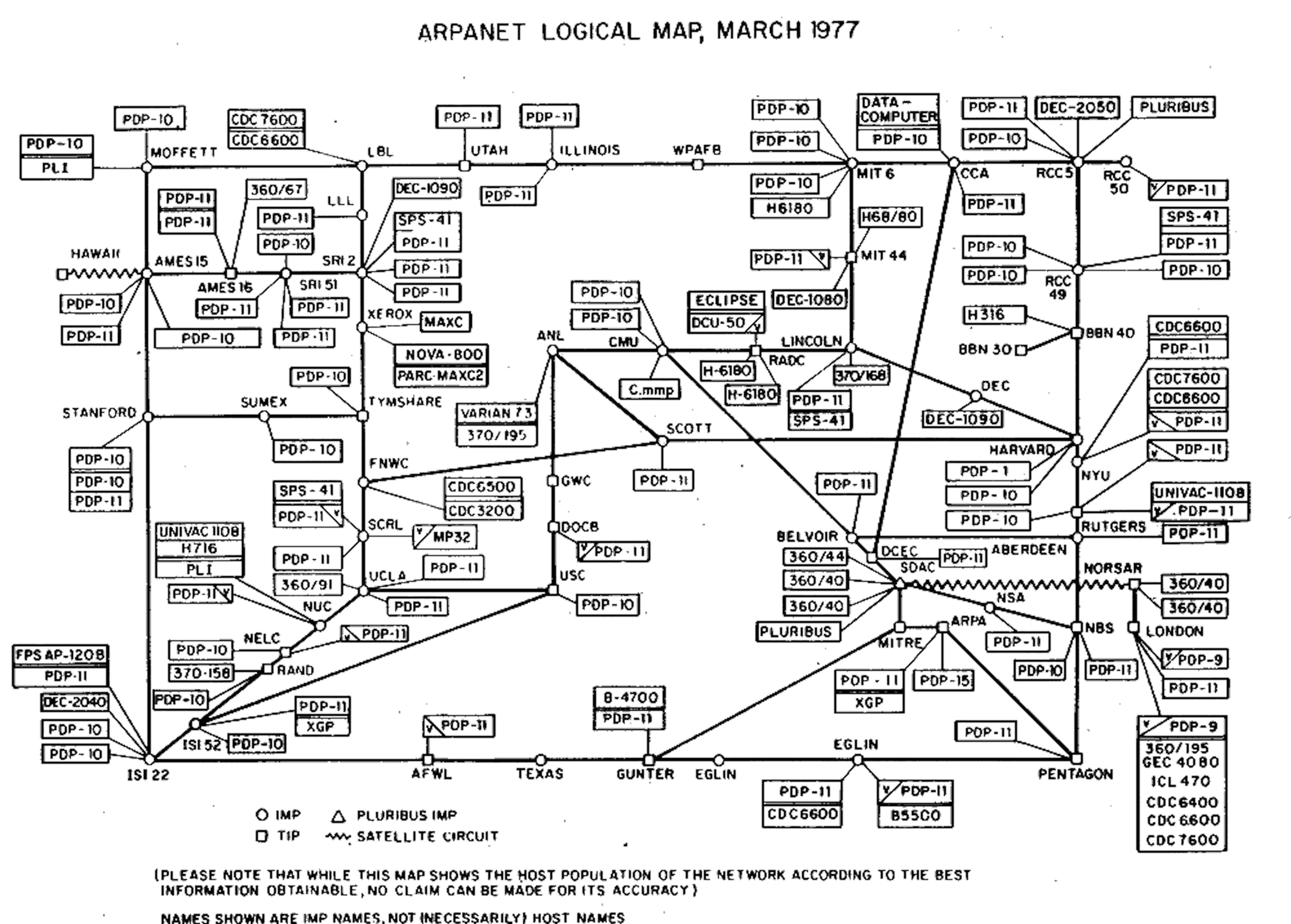
(Image Source: Future of Tech)
In 1970, ARPA created ARPANET, a precursor to the Internet that relied on the IP network protocol suite and packet switching to facilitate communication.
ARPANET relied on routers, not circuits, to evaluate and send data over the fastest connection paths. To prevent interruptions in communications, ARPANET created a standardized approach to data packaging: the TCP and IP protocol connections suite.
Vint Cerf, Bob Taylor and Bob Kahn are credited with creating the protocols that would create the first Internet connection. (Sorry, Al Gore.)
This network was formally closed in 1990.
1973: First Voice Data Packet Transmitted
By 1973, ARPANET interconnected about 40 computers in numerous locations across the United States, including Harvard, UCLA, and MIT.
ARPANET’s next goal was to use Linear Predictive Coding to send and receive voice calls–not just digital forms of communication–over a virtual network.
Linear Predictive Coding, the foundation of modern VoIP technology, is a speech analysis technique that:
- Turns audio/speech into digital packets (compression)
- Transmits data packages over the digital network
- Transforms data packages back into speech audio at their destination (decompression)
Using this method, Bob McAuley, Ed Hofstetter, and Charlie Radar sent the first voice packet over ARPANET at MIT’s Lincoln Lab in 1973. The next year, Lincoln Lab and Culler Harrison, Inc. successfully transmitted test voice data packets to one another–the first example of two-way VoIP communication.

(Image Source: MDPI)
By 1976, Culler Harrison and Lincoln Labs had a conference call over LPC. In 1982, they achieved a major milestone by using LPC to connect over a local cable network, a mobile packet radio net, and an interface with the PSTN (Public Switched Telephone Network.)
At this time, it was illegal to use the Internet for personal reasons. Therefore, technically the first “cybercrime” occurred in 1973 when user Lenoard Kleinrock sent a message regarding his missing electric razor.
1975: CompuServe is born
Despite the growth of digital communications in the early 1970s, it was extremely difficult for most companies, let alone civilians, to access this (very basic version of) the Internet.
That all changed when CompuServe, the first large-scale commercial Internet service provider and a subsidiary of Golden United Life Insurance, came on the scene in 1975.

(Image Source: WinWorld)
Golden United offered Internet access with a pricing model similar to timesharing. Other companies could rent time on the Golden United computer system, providing them with Internet access during standard business hours.
By 1975, CompuServe became its own company and began trading on the NASDAQ. It soon became synonymous with the Internet, much like AT&T with the telephone. CompuServe users could exchange messages over electronic bulletin boards and via email.
In 1980, CompuServe released the first instant messaging service--laying the foundation for today's live chat software and chatbots.
CompuServe wouldn’t see real competition until the 1990s, but when it did, it lost. It was bought by its rival AOL in 1997.
1988: The First Wideband Audio Codec
In November of 1988, ITU-T approved the G.722 wideband audio codec, which offered a much higher call quality than its predecessors.
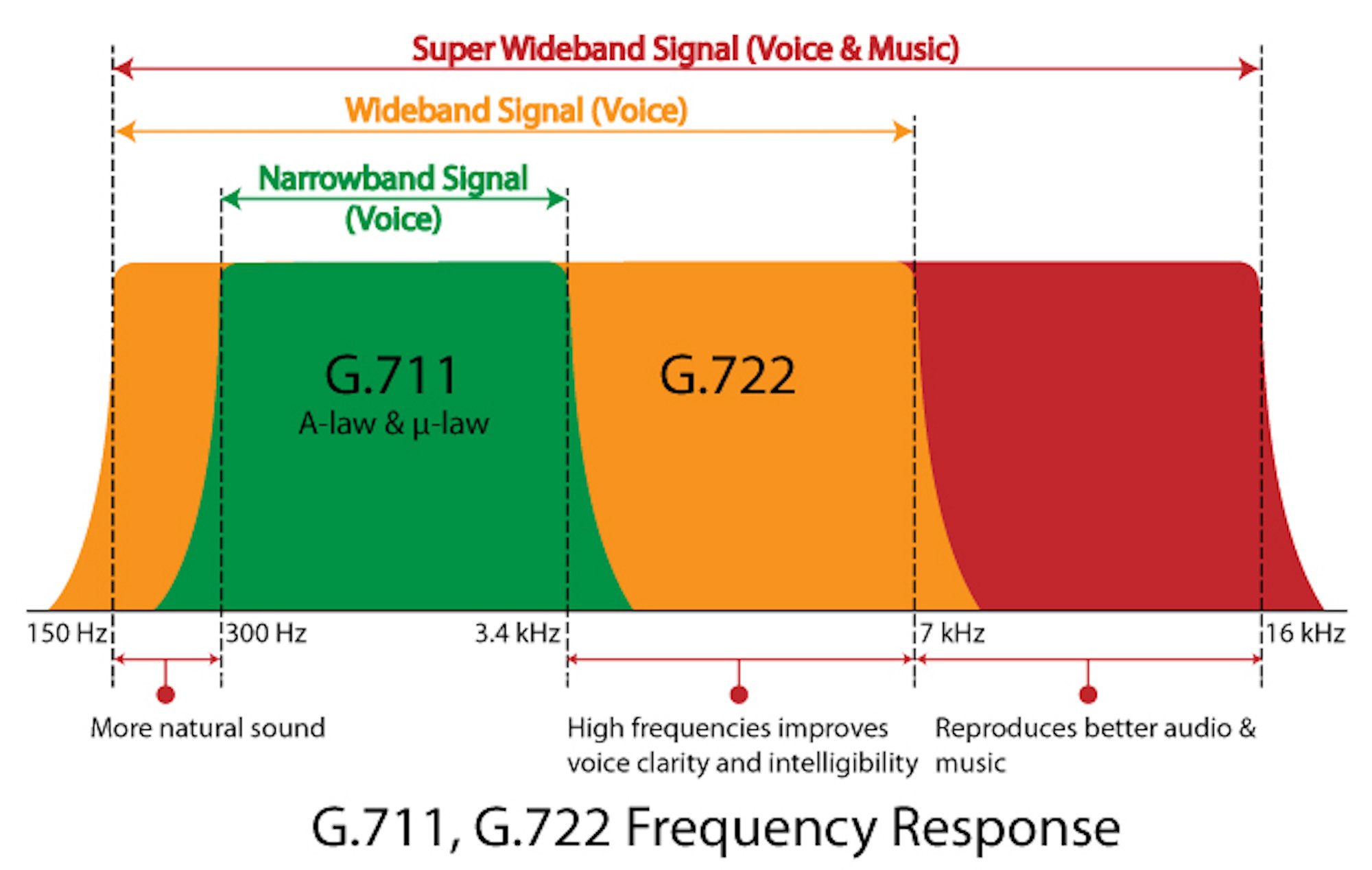
(Image Source: GL Communications)
In addition to having a much wider speech bandwidth, G.722 sampled audio data two times faster than previously possible. G.722 offered data rates of up to 64 kbit/s data rates, making it ideal for VoIP communication–especially on local area networks (LANs.)
It was rated as “toll quality,” meaning its audio was comparable to PSTN phone call quality.
1989-1991: First VoIP Application Released as Public Domain
The first VoIP software application created wasn’t used for business communication at all.
RASCAL, developed in 1989 by Brian C. Wiles sent voice communication over Ethernet networks so video game players could speak to each other while playing.

(Image Source: Speak Freely)
In 1991, John Walker (founder of Autodesk architecture, engineering, and other industry-specific software) moved to Europe to expand his company’s operations.
Technology at the time required a speed of 64 Kb/s to run voice applications. To overcome this, Wiles wrote a decimation/expansion scheme that reduced the necessary bandwidth to just 32 Kb/s.
He releases the program to the public domain under the name NetFone.
NetFone, later known as Speak Freely, was the first software-based VoIP phone. Walker primarily used it to listen in on meetings and talk to other programmers within his company.
1993: First Video Telepresence System
Before Skype and Zoom, there was Teleport, the first telepresence system (later renamed TeleSuite.)
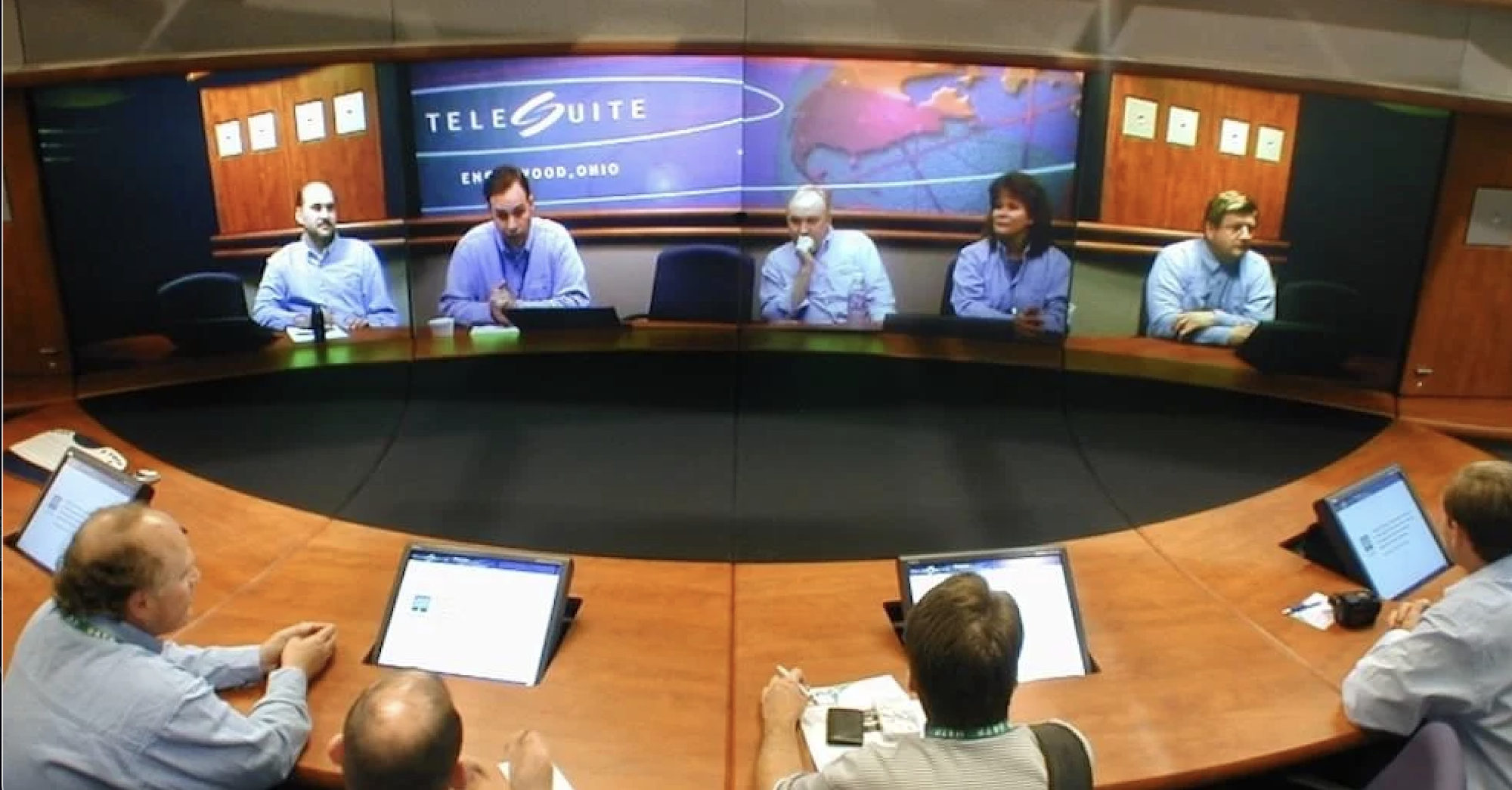
(Image Source: WIRED Magazine)
Creators David Allen and Herold Williams created this basic video conferencing system purely to generate more income for their luxury resort business.
They noticed guests primarily cut their vacations–and stayed at the hotel–short because they needed to return home for business meetings.
The solution?
Video conferencing–an invention making real-time, face-to-face communication possible from anywhere with Internet access.
Their software was so popular, Hilton Hotels became their first big client.
Though the deal later fizzled out, Allen bought all of TeleSuite’s assets and sold them to Polycom in 2007.
1994-1995: Free World Dialup + For-Profit VoIP
Founded in 1994 by Jeff Pulver, Brandon Lucas, and Izak Jenie, Free World Dialup (FWD) was the first true VoIP business venture–and one of the only completely free options ever created.
Of course, free VoIP numbers could only last so long.
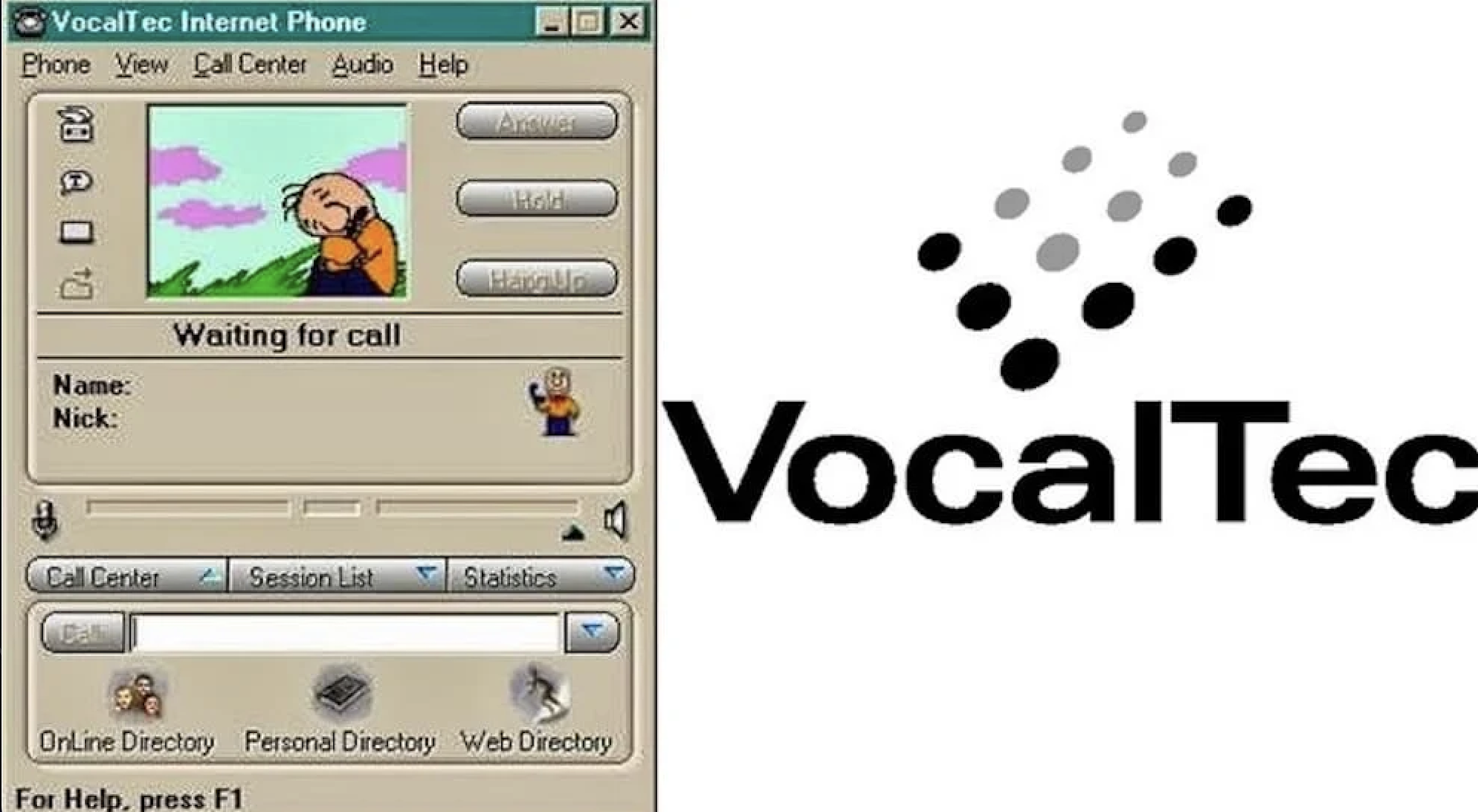
In 1995, the founders of VocalTec Communications created the first-ever commercial VoIP application, VocalTec Internet Phone.
To operate over the H.323 protocol, it required a 486 computer processor, 8MB of RAM, a 16-bit soundcard, and either an SLLP or PPP connection.
Though it doesn’t sound like much today, it was very high-tech for its time.
VocalTec charged registration and per-minute fees–and subjected users to advertisements before calls–but still saved customers money on international and long-distance calling rates.
The issue?
Low bandwidth speeds meant poor audio quality, frequently dropped calls, and severe latency and packet loss.
These problems prevented VoIP technology from becoming an overnight success. In its infancy, VoIP-powered calls made up just 1% of all phone calls.
1997-1999: Hosted PBX and SIP Development
The first hosted PBX solution was created in 1997, in a San Francisco basement. This IP Private Branch Exchange (PBX) system evolved from a tool that provided callers with dietary recommendations based on their dialpad input responses to pre-made prompts.
Called simply “VirtualPBX,” the technology allowed users to make and receive calls via an Internet connection–eliminating the need for bulky and expensive on-premise phone service equipment.
VirtualPBX also introduced more advanced calling features, like web portal access and Find Me/Follow Me.
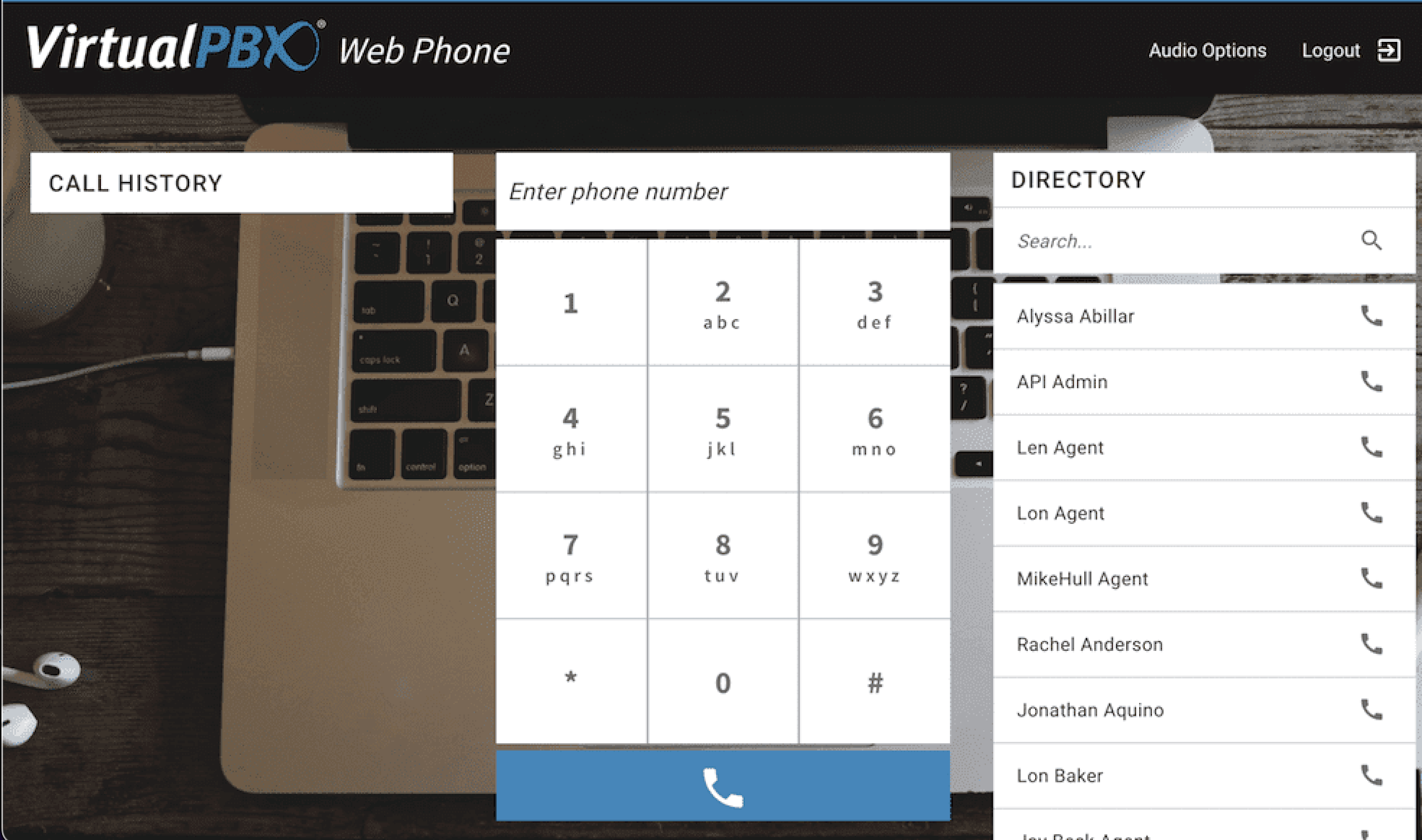
The rise in offsite virtual PBX systems was the beginning of the end for traditional landlines and analog phones.
In 1999, Mark Spencer programmed Asterisk, an open-source IP PBX program that soon skyrocketed in popularity. Asterisk was continually improved by thousands of programmers over the years–and its success pointed out a few flaws in the VoIP and PBX space.

As virtual communication continued to evolve, a clear need for a standardized approach to communication protocols emerged–and SIP was born.
SIP (Session Initiation Protocol) was created by the Internet Engineering Task Force in 1996, and essentially standardized the way Interet-powered communications between IP devices would work.
While VoIP technology sends digital data packets over the Internet to facilitate real-time communication, SIP makes that possible by creating, maintaining, updating, and ending connections between multiple endpoints.
To create and terminate these connections, SIP examines:
- User Location: The geographic area where both users are located
- User Availability: If the user being called is able/interested in communicating with another user
- User Capability: What parameters/additional protocols should be established to facilitate communication
- Call Setup: Phone ringing/initiating the connection between callers
- Call Handling: Maintaining/updating the connection during the call, and ending the call
Because SIP scaled better than H.323, cell phone providers adopted SIP as their protocol of choice for mobile VoIP.
Though SIP was created to manage IP voice calling, today it manages numerous telecom functions including video conferencing, business texting, chat messaging, and more within business phone systems.
2003-2004: Skype and Vonage
In 2003, Skype (then called Sky Peer-to-Peer) was founded in Estonia. By 2005, it had 50 million users.
Skype first provided free in-network voice calling between PCs, charging users who needed to make calls via the PSTN.
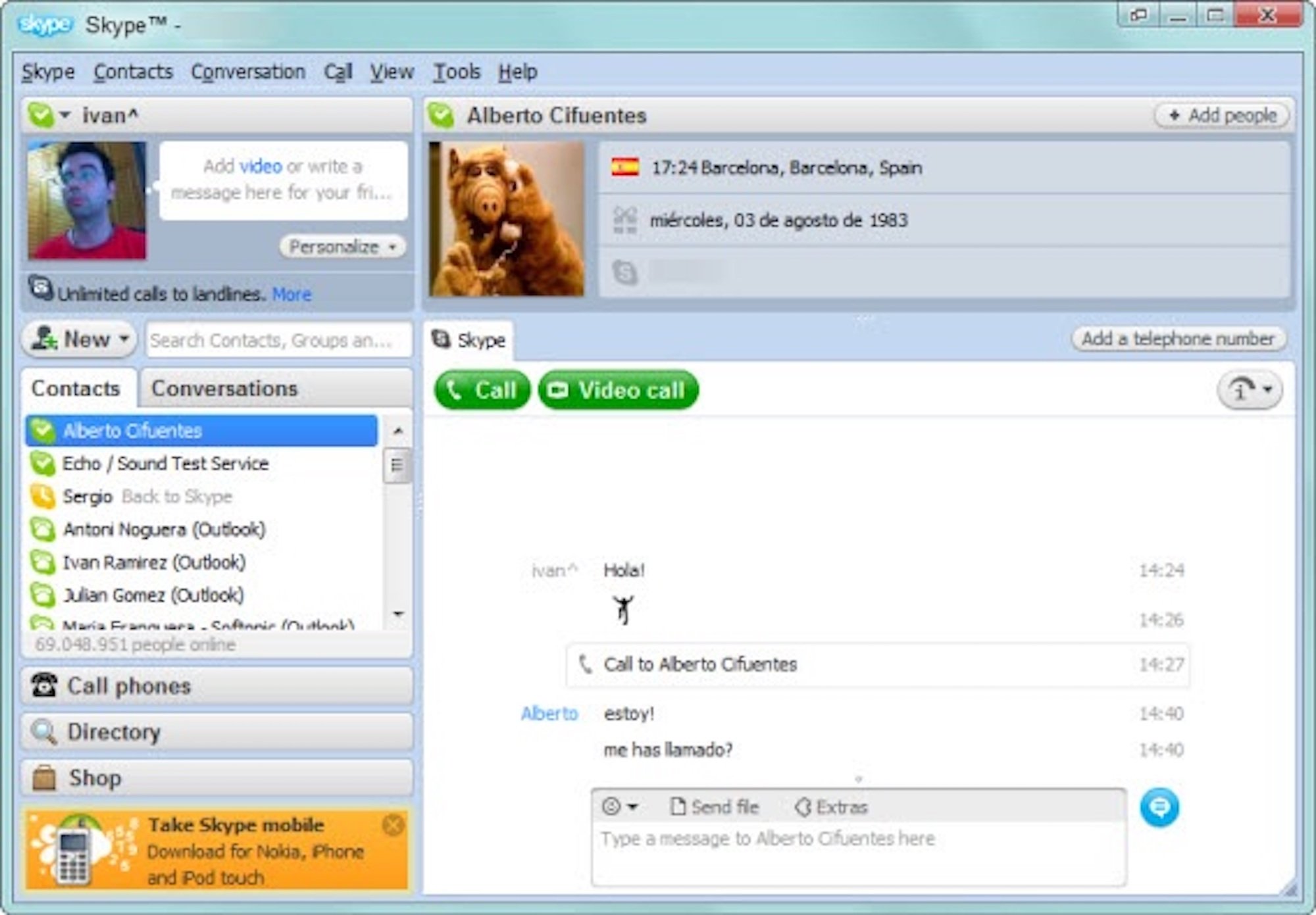
Though Skype began as an audio-only calling tool, it expanded to offer video calling, file sharing, chat messaging, and more.
It was acquired by eBay in 2003, and Microsoft in 2011.
Soon, countless Skype alternatives emerged on the market, like Vonage for Business. VBC was developed in 2004 and had roughly 2 million subscribers by 2006.
2004: The FCC Weighs In
Up until this time, regulations surrounding VoIP calling were shaky at best.
In 2004, Federal Communications Commissioner Chair Michael Powel declared that VoIP was an information service, not a phone service--which decreased taxes for VoIP customers.
In 2005, VoIP services that connected to the PSTN were required by law to be able to make Enhanced 911 (e911) calls.
E911 calling ties each VoIP phone system user to a specific location so that, in the event of an emergency, dispatchers know exactly where to send the required services.
Call recording laws, spam and telemarketing regulations, and more would soon follow.
2005-2006: The Rise of Mobile VoIP
In 2005, Calypso Wireless released the C1250i, the first-ever mobile phone with Wi-Fi connectivity.
The C1250i allowed users to seamlessly switch between standard cellular link towers and Wi-Fi connections, which made real-time, two-way video conference calls and IP phone calling possible.
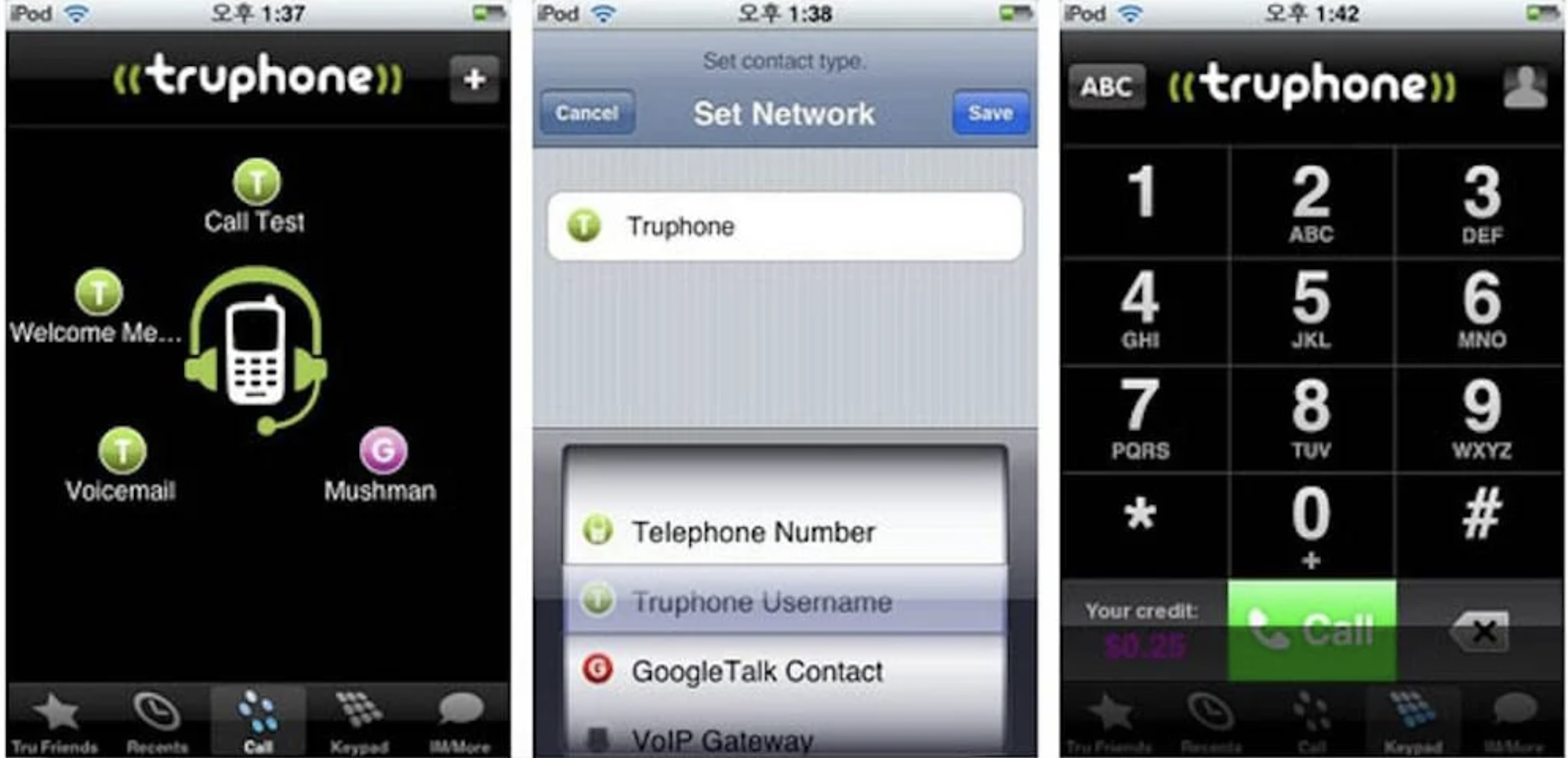
In 2006, Truphone, the first mobile VoIP app was launched for Nokia phones, iPhones, Androids, and Blackberry users.
This app let users make free in-network telephone calls, send free in-network texts, and make VoIP calls via the PSTN. The app used SIP to make calls over the Internet connection, not via cellular networks.
2010-2016: VoIP Goes Mainstream
By 2012, hosted VoIP telephone services were growing at a rate of roughly 17% per year, while SIP trunking saw an 83% growth from 2011-2012.
By 2015, many businesses were either transitioning to VoIP voice calls or already had IP telephony in their office.
It had become such a large market that AT&T petitioned the FCC to allow VoIP phone companies to discontinue the use of copper wire in favor of fiber optic cables and IP switches.
During this time, there was a boom in VoIP companies that fostered competition in the form of different pricing and feature packages and a greater focus on mobile VoIP.
2016-2023: Remote Work, VoIP, and Unified Communications
VoIP technology in the United States alone had already become a $20 billion industry in 2018 and saw a growth rate of more than 28% between 2016 and the start of 2020.
So, while the VoIP industry was on track to become the new normal, the Coronavirus pandemic that began in early 2020 accelerated VoIP adoption.
A nearly overnight increase in remote work left businesses scrambling to address remote communication needs.
VoIP was no longer an option–virtual phone software became a requirement.
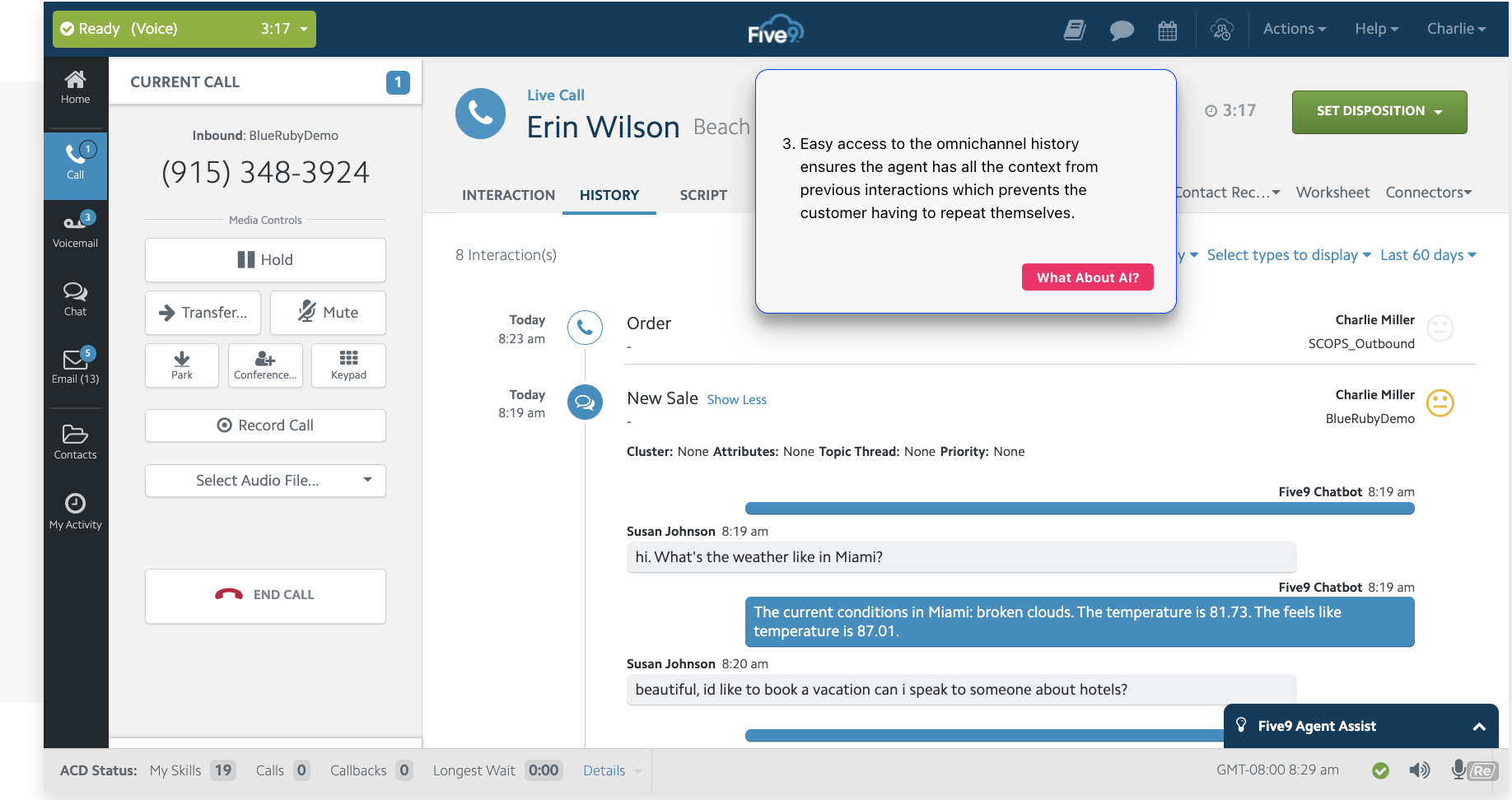
VoIP-powered omnichannel communications on the Five9 platform
Omnichannel routing and unified communications, powered by VoIP technology, allowed remote teams to connect with one another and clients via multiple channels on any device, including:
- Video chat
- Softphone apps
- Conference phone calls
- Multiple phone lines
- Team chat messaging
- Website chat
- Virtual Voicemail
Integration with CRM software that provided essential customer history on incoming callers became another essential feature of VoIP phone systems.
The Future of VoIP
Today’s VoIP systems are more complex and “smarter” than ever before, relying heavily on Conversational AI, machine learning, Natural Language Understanding, automation, and more to anticipate customer needs and handle as many customer queries as possible–without involving a live agent.
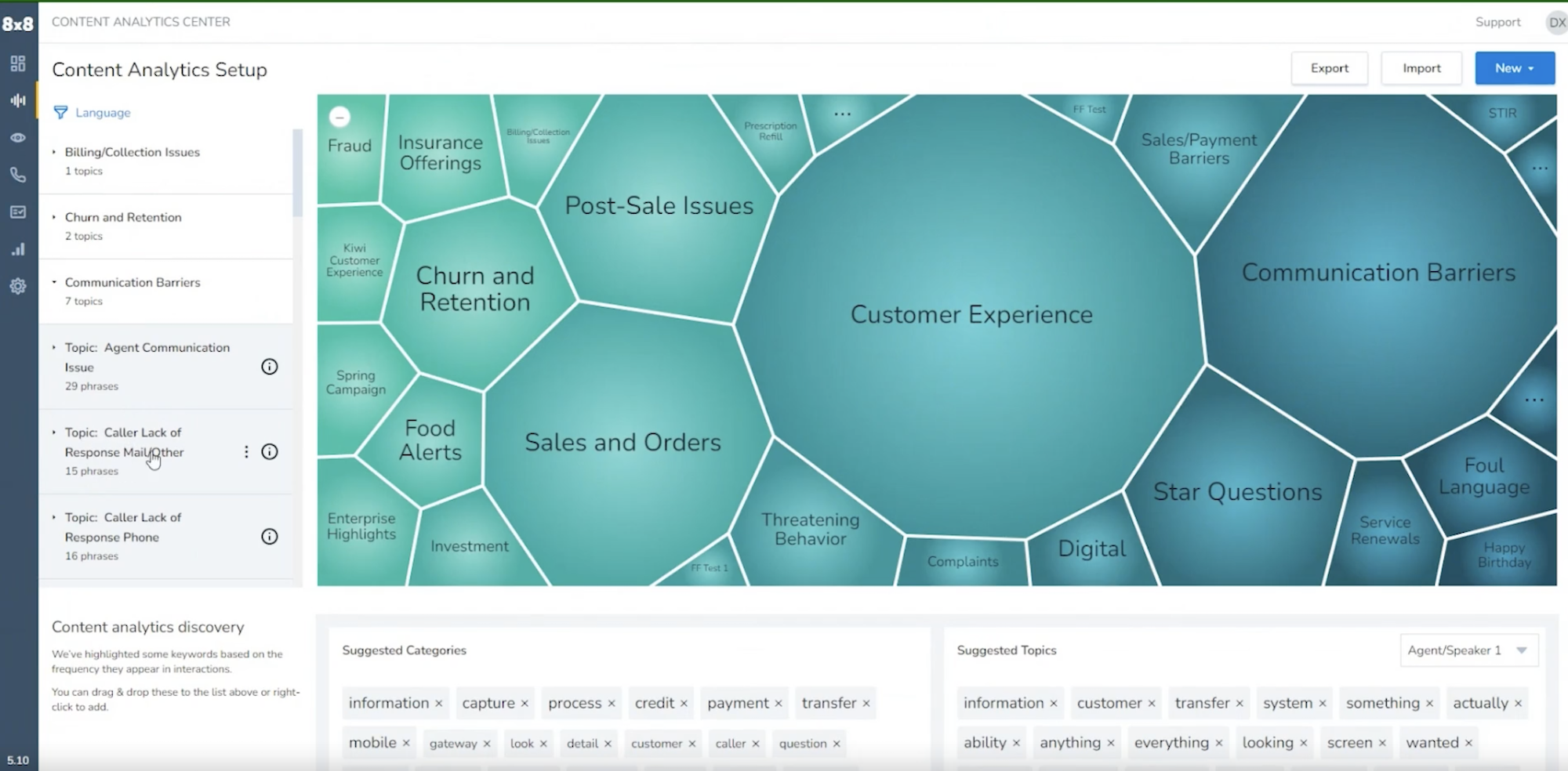
Conversational AI data shown in the 8x8 app
Omnichannel customer self-service is one of the most important VoIP features to look for when selecting a provider, especially given the rising customer demand for automated support.
Ready to make the switch to Voice Over IP?
Are you using virtual telephone systems already, but looking for a higher-quality provider and better features than what you currently have?
Our interactive table on the top business VoIP providers will help you to learn about the best options.



